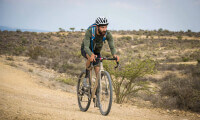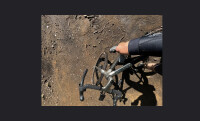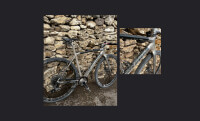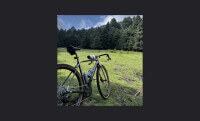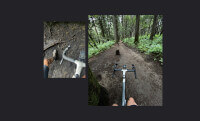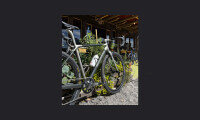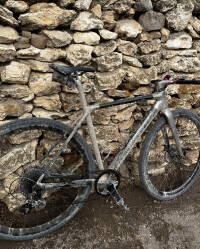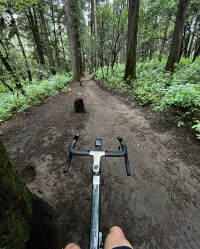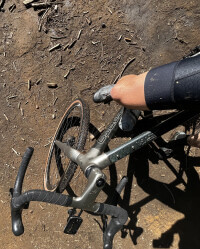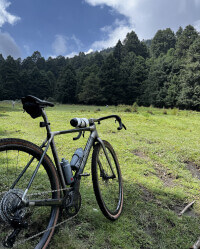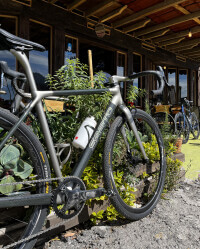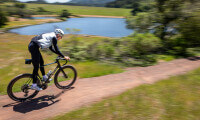“I’ve been riding since I was 12 years old,” says a cheery Diego de la Concha as we exchange hellos across continents. Diego is Sarto’s Mexico City ambassador, South American lynchpin and bike fitter extraordinaire (our words, not his). “In my early years, I used to compete in national races but never really got to a truly professional level,” Diego begins in answer to my question about how he found his way to bike fitting.
“I guess racing bikes was a hobby, albeit a serious one. Anyway, at that time, I was also running a lot, too much really, and I picked up a knee injury, so I had to take a break from exercise.” A short while later, Diego moved to Mexico City to study Biomedical Engineering. During the course, and with his own injury in mind, he wondered about the difference cycling, rather than walking, might make to a person’s recovery. When he needed to choose a topic for his thesis, the direction was obvious, and Diego’s journey towards understanding the interaction of the body and the bike began.

“Compared to walking, the bike doesn’t have so much of an impact on your joints,” he explains. “But that’s a bit of a blanket statement. The reality is that if you change your position on the bike, even a little, you work some muscles more than others. Essentially, cycling is similar to swimming in that you tend to use your whole body. And during my thesis, I studied how the nuances of bike position could further aid recovery and how a small change could mean the world on the road. It was pretty fascinating.”
Keen to marry theory with practice, Diego contacted a local bike store and asked if he could provide in-house bike fits for their customers. They said yes, and he soon began putting his ideas into action. I mention to Diego that his route to bike fitting was somewhat unconventional, coming to the profession not from a desire to be a bike fitter, but to explore the unique interaction between bike and rider and apply engineering principles to discover better outcomes.
“Yeah, it wasn’t the normal route,” he laughs. “Usually most bike fits are done by the book, from knowledge passed on, from watching the rider pedal and so forth,” he says. “The problem is that traditional bike fitting never really gets into ergonomics, especially when a person’s movement intersects with an injury. Unless you’ve studied these things, you won’t know how to adapt someone’s fit to help their journey towards recovery and full mobility. And you may be doing more harm than good.”


It turns out that preparing someone for a bike fit is a lot like talking to a client about the right bike, with all of the many questions about their health, history, and riding profile the process entails. “The bike fit for someone who mostly rides on flat terrain will be quite different from that of someone who always rides in the mountains,” Diego explains. “And it’s different again if someone is riding a mix of terrain. And again, for someone who has only just started riding compared to an experienced cyclist. All this information is super important; it informs the fit.”
Diego notes that a bike fit is a snapshot of a moment in time, not a moving target. “It’s a tuning process. If someone gains flexibility and fitness after an initial bike fit, they’ll probably need a new fit a few months down the road that takes into account their improved condition.”
If there is a problem with becoming so aware of the complexities of the body and bike interaction, it’s that off-the-shelf bikes are off the table.
“I started searching for a bike brand that didn’t just do custom geometries, but also custom compositions, bikes tuned for fit and feel. Naturally, it wasn’t long before I found Sarto.”

To illustrate how different a Sarto is, Diego talks about the typical scenario of two riders of different weights who choose the same stock model of bike. “Even if the two riders have the same requirements, let’s say a certain level of comfort and stiffness, under the paint, they need very different frame compositions. However, stock frames are built with the same geometry and tube attributes across every size. For that reason, as the first of many, a stock bike, even a bike with custom geometry but a stock composition, can never match the unique nature of a Sarto.”
And Diego would know. “A Sarto isn’t usually someone’s first bike,” he notes. “Usually, a client will have had a few bikes and, after long experience, know what they need.” I comment that it should be the reverse, that a custom bike should be the starting point for everyone’s cycling journey, such is the transformative effect of bespoke. “That’s true,” says Diego, “and that raises a question of price. Here, as everywhere, off-the-shelf bikes have gotten very expensive. So, if you’re in the market for a premium road or gravel bike, then a Sarto is in the same ballpark, and you get the advantage of experiencing absolute individuality. Plus, your bike will be handmade, fibre-to-frame in Italy.”


What happens when you finally find the bike you were searching for? A lot of relief and, as Diego explains, a lot of comfort. “That’s the feedback I hear most, that a rider is so comfortable. No neck pain, no saddle discomfort, just a forgetting and a focusing, of the bike and back to the ride.” Or, more succinctly: “A bespoke bike is like coming home.”

So what does a bike fitter and racer in Mexico City ride? “I chose the Seta Gravel TC,” says Diego. “I like the idea of having one bike that works for everything. And the Seta Gravel TC is super versatile. I can use it for a social coffee ride here in the city and a 200km gravel race. It’s also pretty quick on the road, and unless you’re looking to set personal bests, it will hold its own.”
But most of all, Diego keeps returning to the sheer fun of the Seta Gravel. “I can road ride with my friends, spy some dusty trail that leads off the road and looks to loop back, take it, then rejoin the group,” he laughs. To some raised eyebrows, I imagine. “Ha, for sure. But that’s the magic of the bike.”
And in a city where the roads often resemble overseas gravel and the trails the wilder end of cross-country terrain, Diego appreciates his bike’s ability to smooth the way. “That’s also where the Tri-Composite filaments come in,” he says. “They really do provide extra dampening, and given how challenging the roads can be, let alone the gravel, I’ll take any advantage I can get!”
Diego mentions a recent 200km gravel race in central Mexico as rolling proof of how the Seta Gravel stands up to rough treatment. “It was my first opportunity to really push the bike to its limit,” he explains. “And it was amazing. It felt like nothing else. The trust I could have in it allowed me to push harder than I think I could have on another bike.” Because speed comes through comfort? “Exactly that, yes. If you’re happy on the bike, everything feels easier. And that’s the magic of Sarto.”
And this year, Diego will need all of the magic he can get, as he plans to line up at Le Tour de Frankie, an 800km bikepacking race from Mexico City to Oaxaca this spring, as well as a possible trip to Italy via the ‘mortals’ Paris-Roubaix event.
On that note, Diego and I exchange goodbyes and promise to catch up in Italy. “Coffee and gravel - it will be perfect!” he laughs.
Article by Pete Harrington | 2 February 2024 Photos by Diego De La Concha
